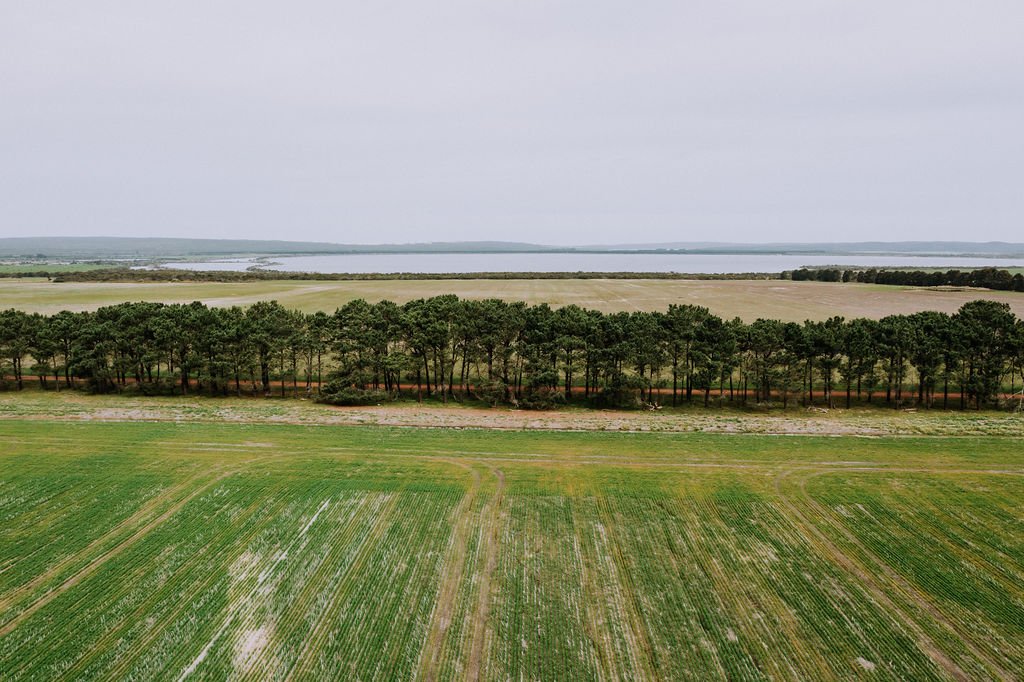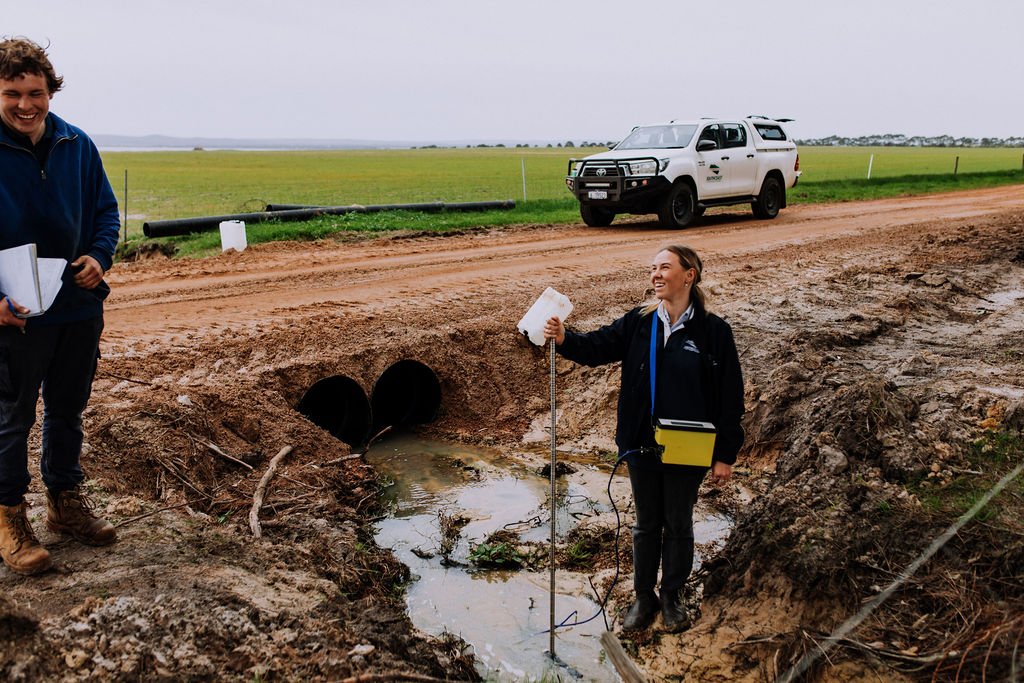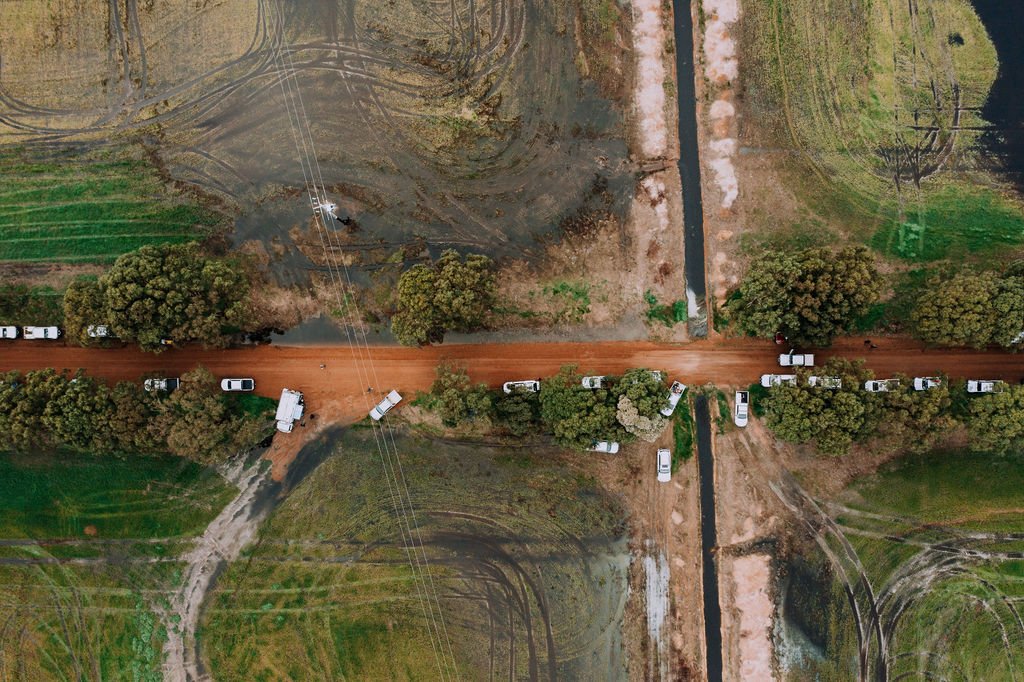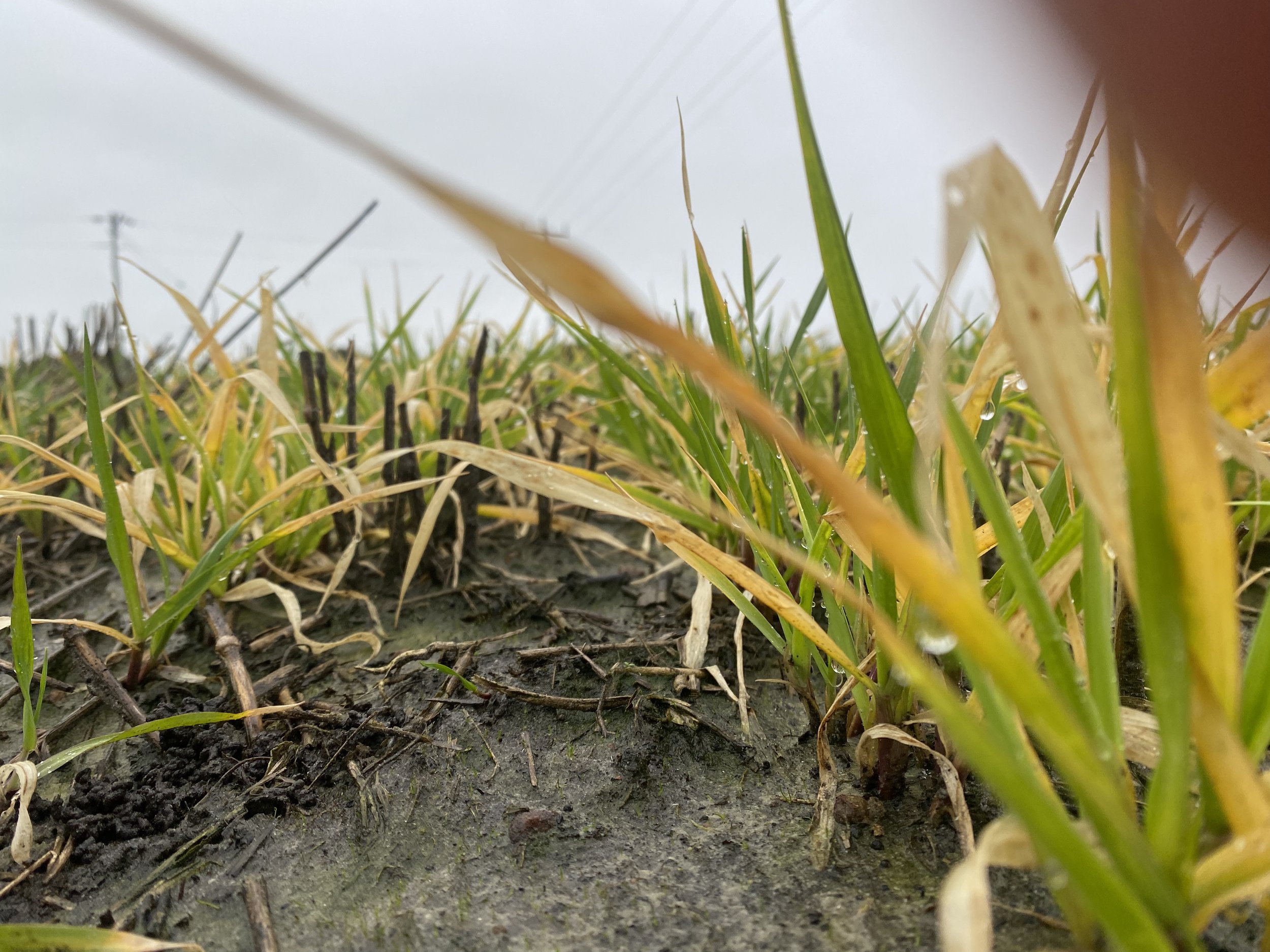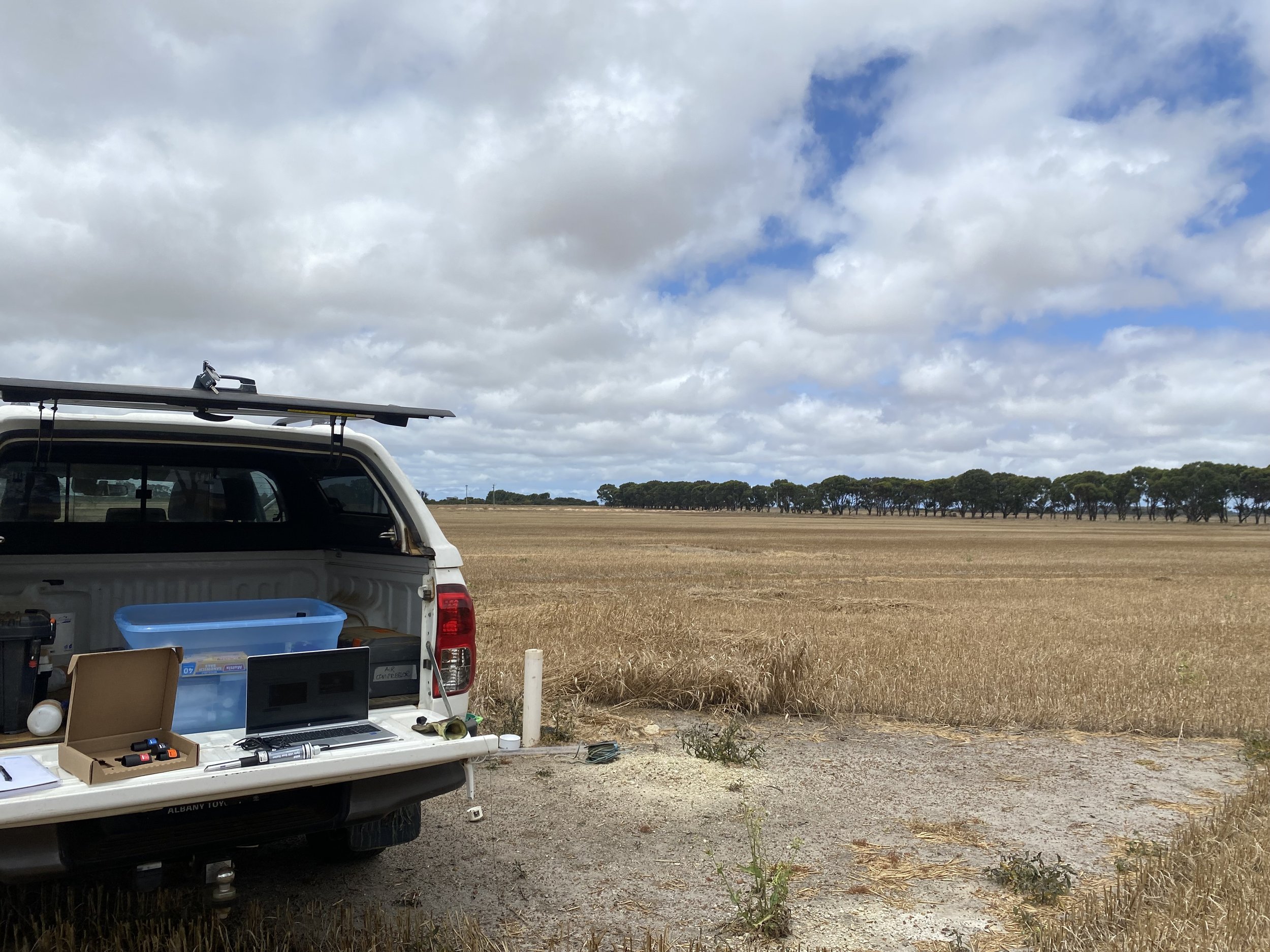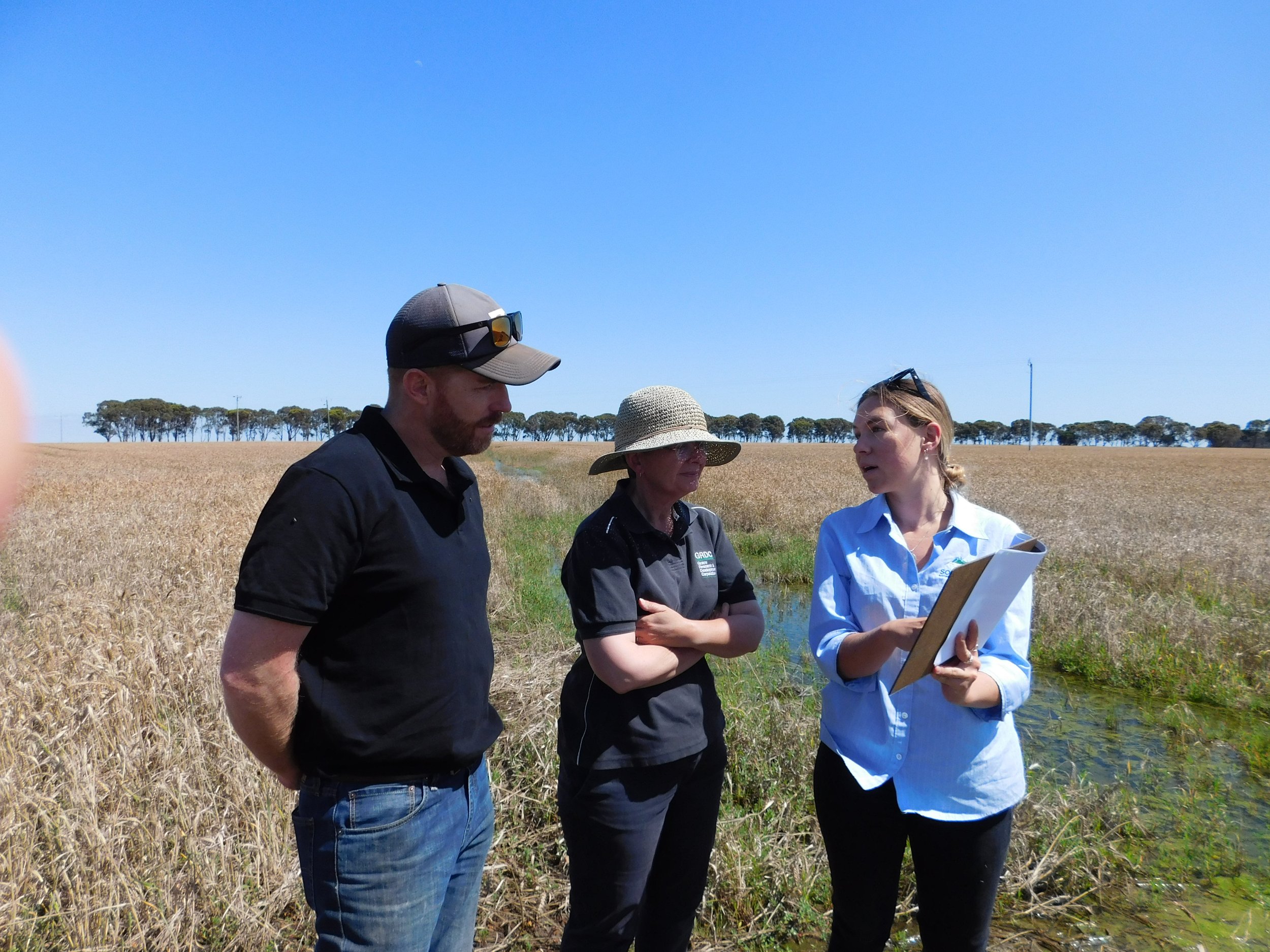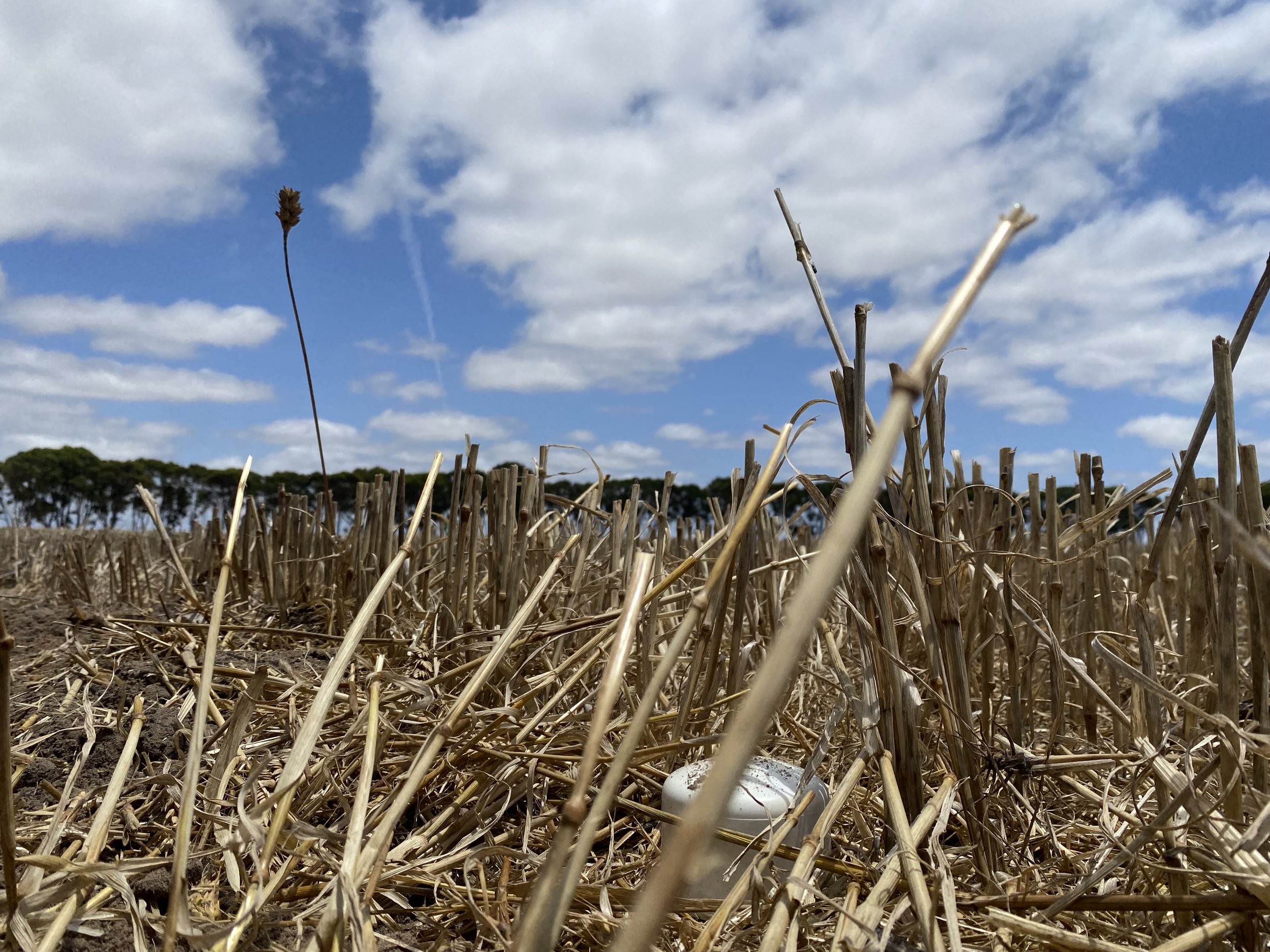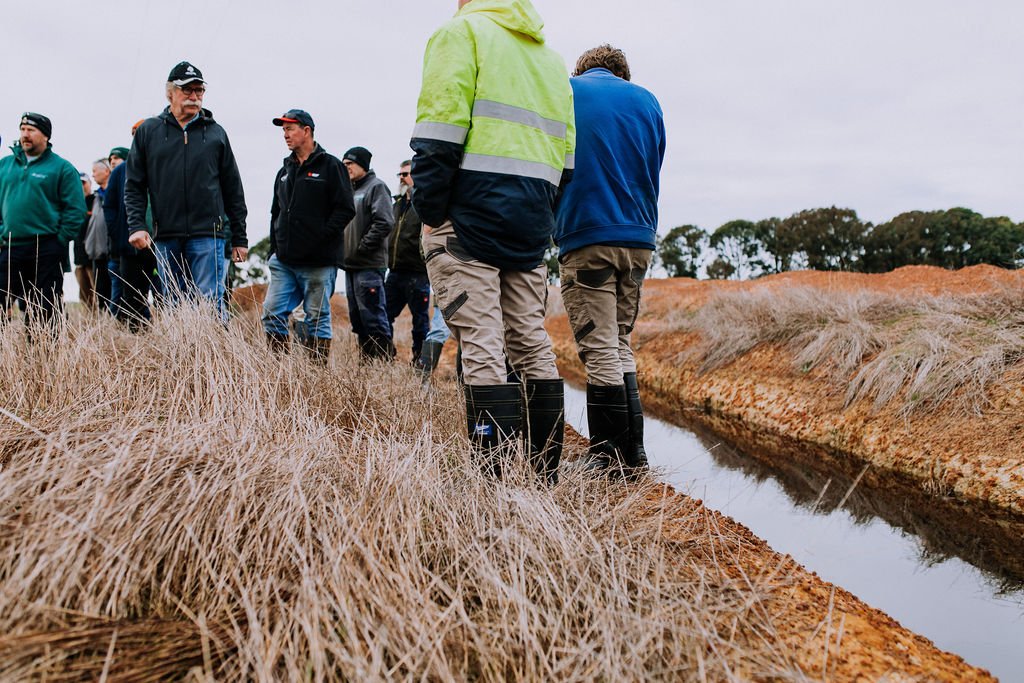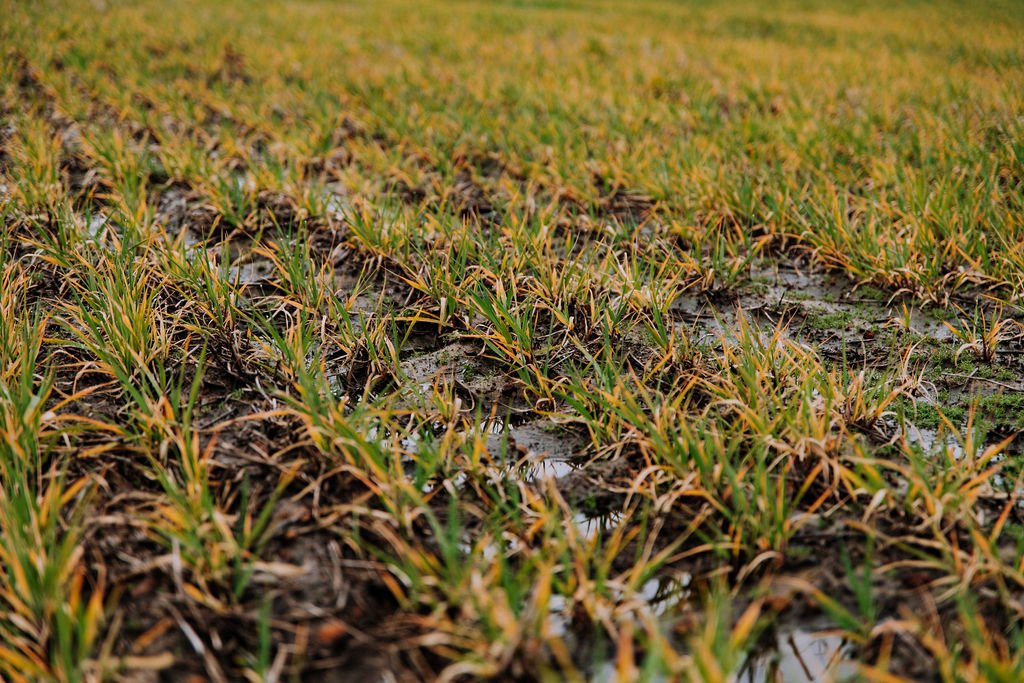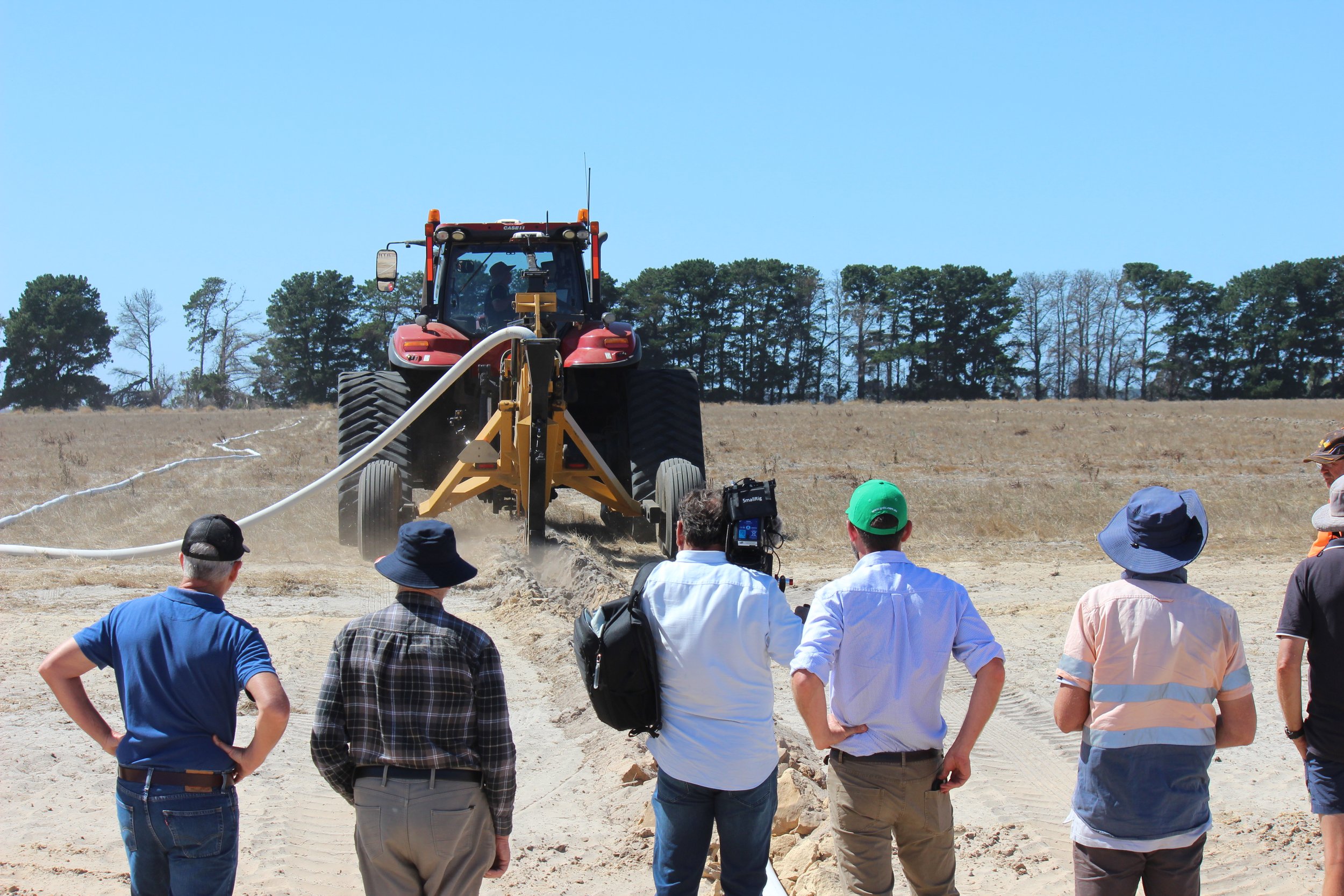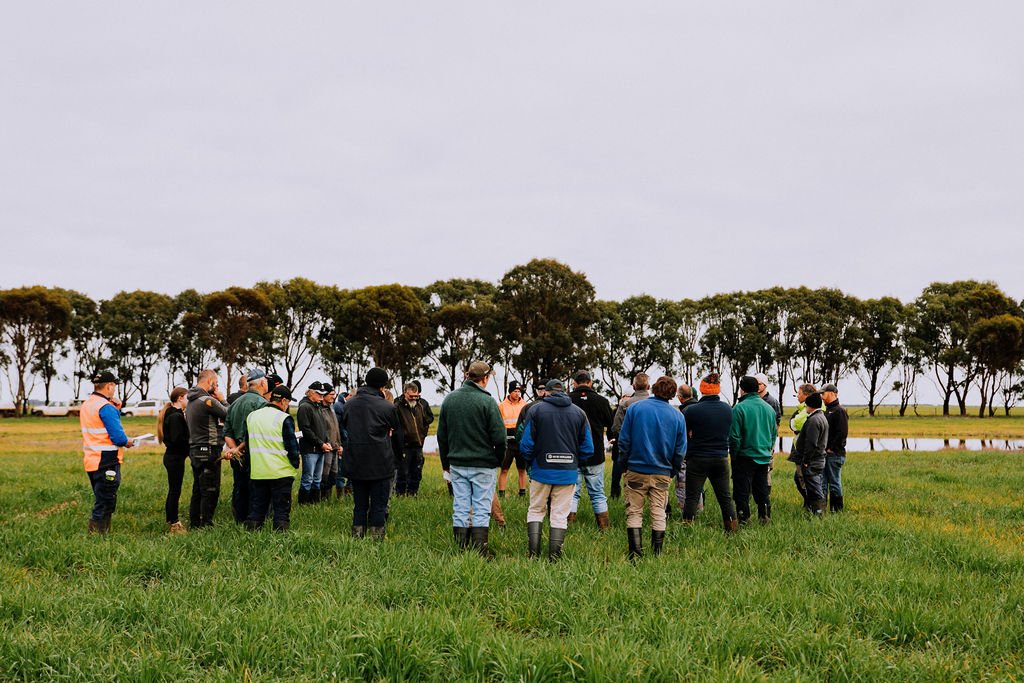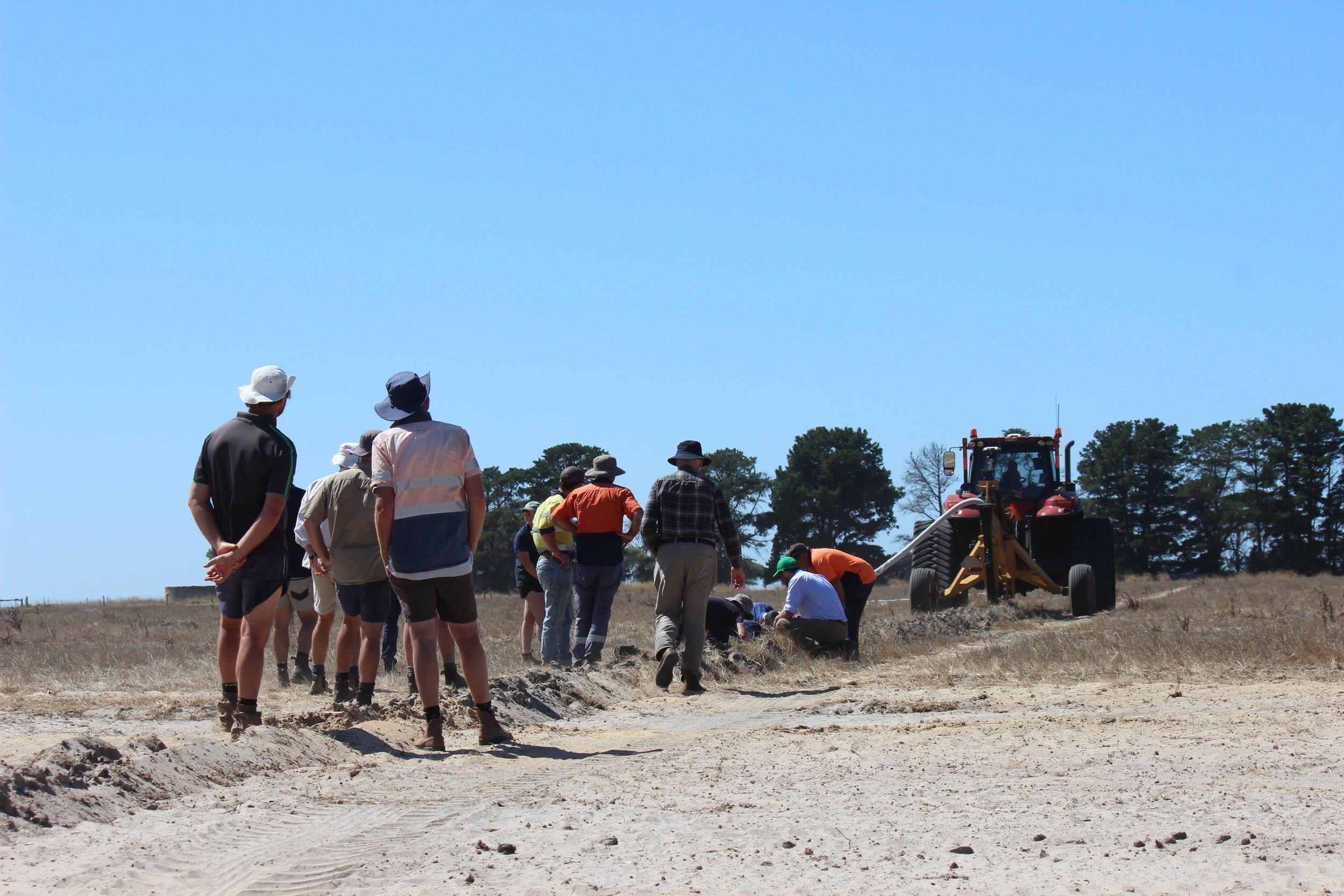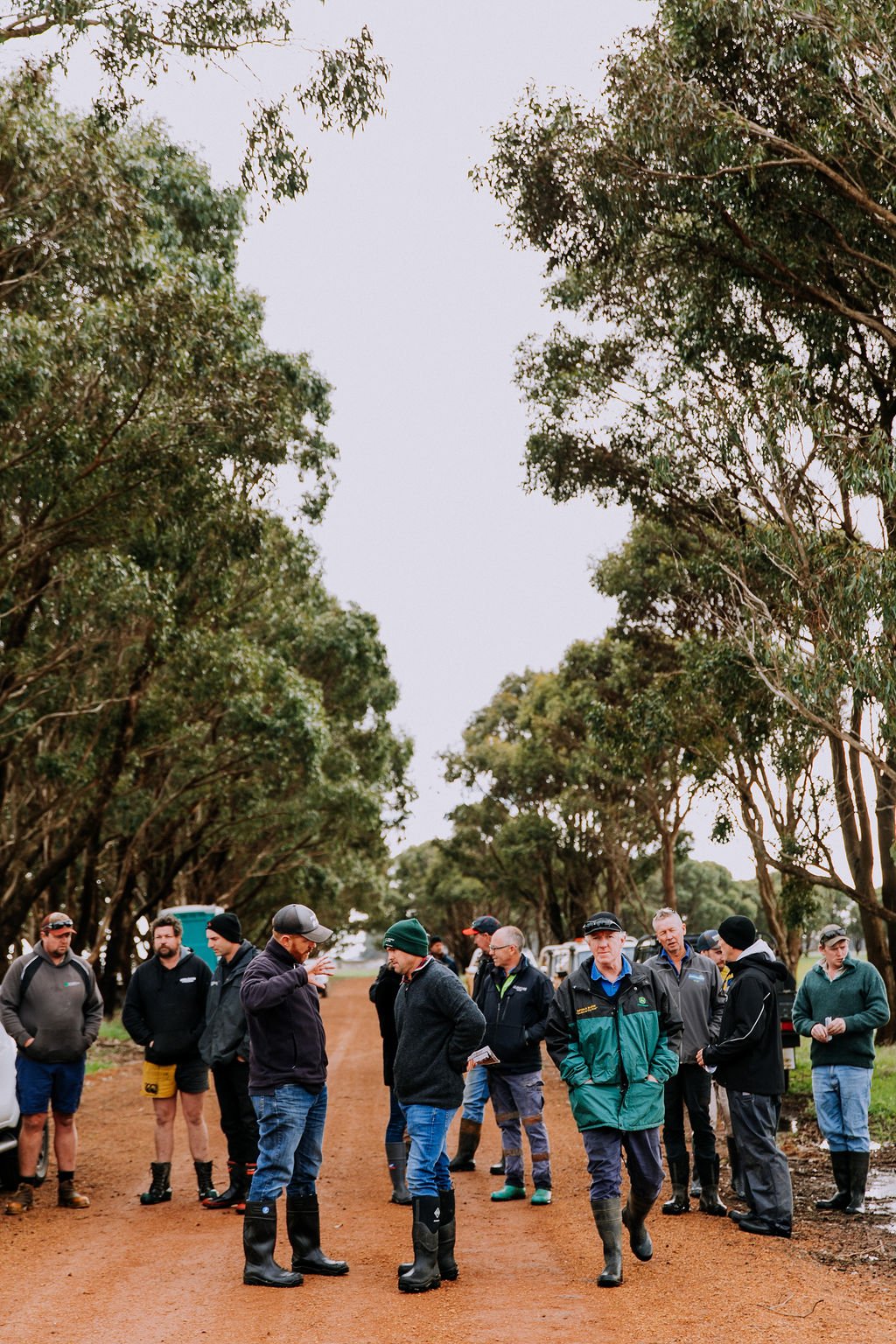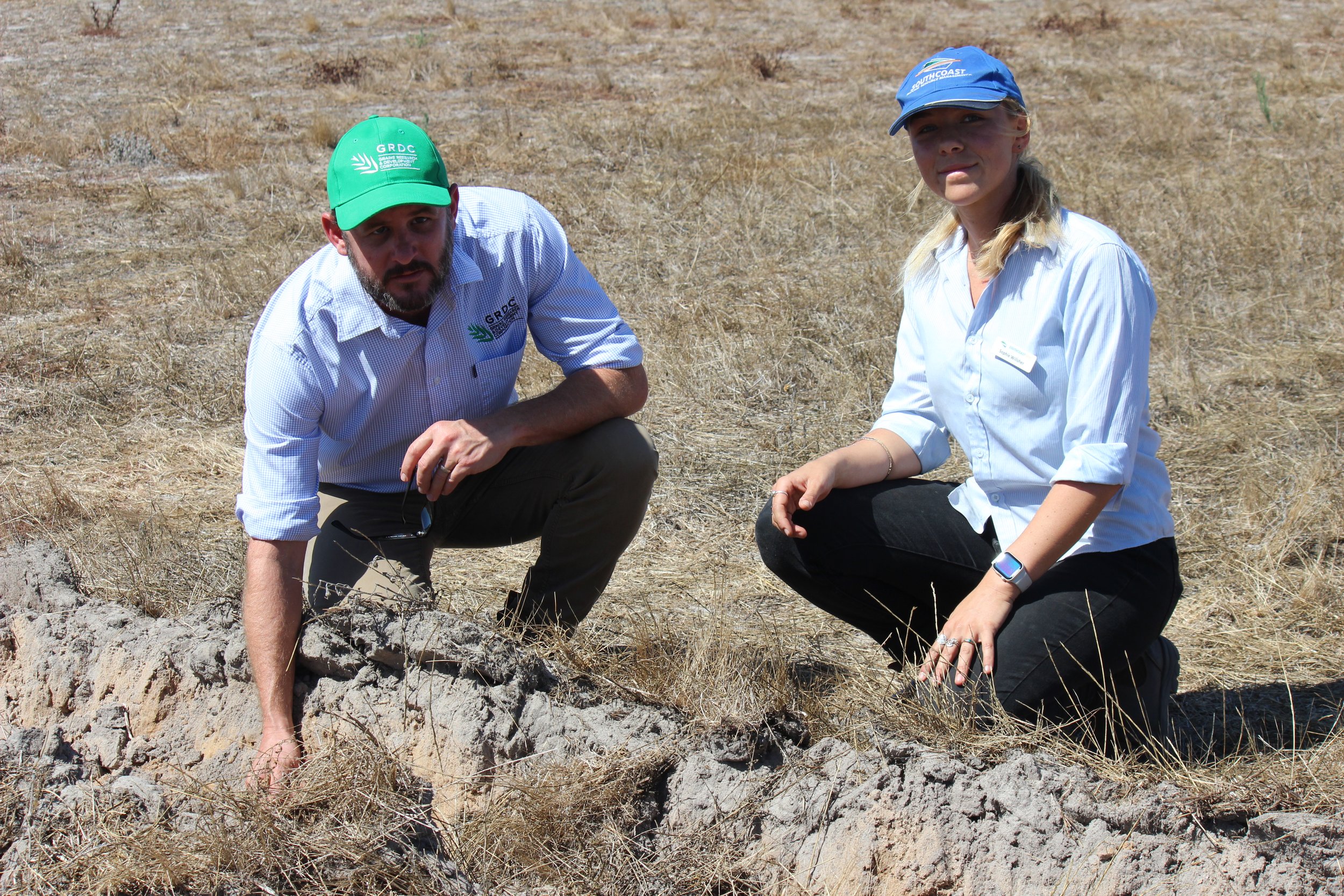

Subsurface Drainage For Waterlogged Paddocks
This project is an investment by the Grains Research & Development Corporation
Waterlogging affecting your productivity?
You're not alone. Over 3 million hectares of agricultural land in Southwest WA is moderate to highly prone to waterlogging. The Subsurface Drainage Return on Investment Project is a four year project investigating the time til return on investment for subsurface drainage systems, as a tool to address on farm waterlogging and improve crop yields. Watch our video to learn more,
Background to the Trial
Subsurface drainage is a surface water management tool that addresses perched water in the subsoil of the paddock. Unlike open drainage systems, tile drains, or slotted polypipe, are buried to the depth of the clay layer, typically around 600mm – 800mm deep. Due to the depth that these pipes are buried, growers are able to crop overtop of the drains, increasing your arable area.
Water entering into the topsoil is trapped by an impenetrable clay layer, which creates waterlogged conditions, and leads to reduced productivity, or crop drownings. The thin slits along the polypipe allow perched water to infiltrate into the pipe and therefore drain away from the root zone of the crop. This drainage action in turn alleviates waterlogging and increases productivity.
The design of subsurface drainage systems is largely variable but can prove to be a valuable resource if growers choose to discharge the water into farm dams. Water exiting the root zone and draining into dams may increase water available for stock or spray, an added benefit of these systems that is being explored by South Coast NRM and others across the South Coast.
How to install subsurface drainage - Listen to the podcast.
The equipment and machinery required to install subsurface drainage is variable, and largely dependent on the on-farm conditions around the planned drainage site. Specifically, the elevation and soil content of the site will influence what machinery and equipment will work best for that farm. Considering the environmental context of the site will help to determine important design decisions such as whether to infill the poly pipe with aggregates like limestone, or simply cover the pipe with a perforated sock. Both options help to prevent blockages to the pipe but will have varied logistical and financial implications.
Using specialized contractors can streamline this critical design process, with their access to tools and resources such as digital elevation models to ensure subsurface drainage systems are designed appropriately for the landscape. Growers can also opt to install these systems themselves but are strongly encouraged to seek expert advice from local contacts such as the Department of Primary Industries and Regional Development, to ensure that the drainage system is designed effectively.
Through South Coast NRMs subsurface drainage trial, we are monitoring systems both installed by specialized contractors, and by the grower. This trial hopes to provide a time til return on investment to support growers and advisors in making that crucial management decision around subsurface drainage, including the methods and machinery used to install these systems.
Contact your local DPIRD office for advice: Office locations | Agriculture and Food
Interested in subsurface drainage? Get the Need-to-Know facts with this handy guide booklet, and useful web links featuring preliminary trial results & more.
How to diagnose and manage waterlogging (DPIRD) https://www.agric.wa.gov.au/climate-land-water/soils/managing-soils/waterlogging.
Effects of waterlogged crops and the soil (Soil Quality) http://www.soilquality.org.au/factsheets/waterlogging
Farmweekly Article November 2022
Key highlight photos from the project. photo credits: Rosie Henderson, Dorothy Henderson, Sophie Willsher (South Coast NRM)



